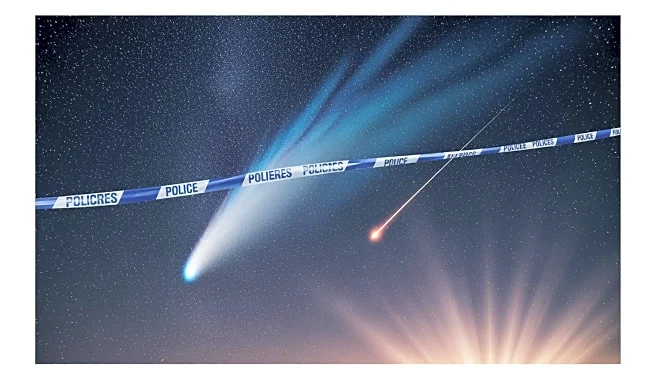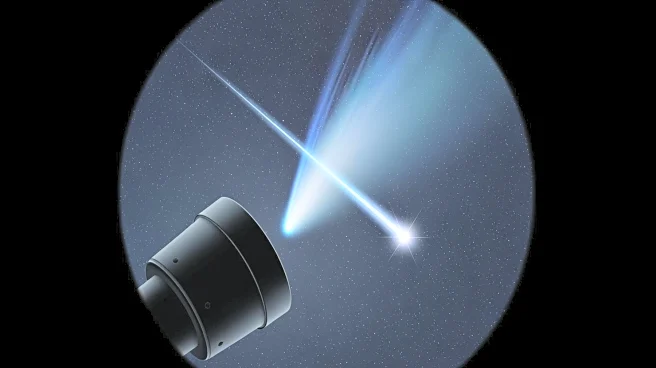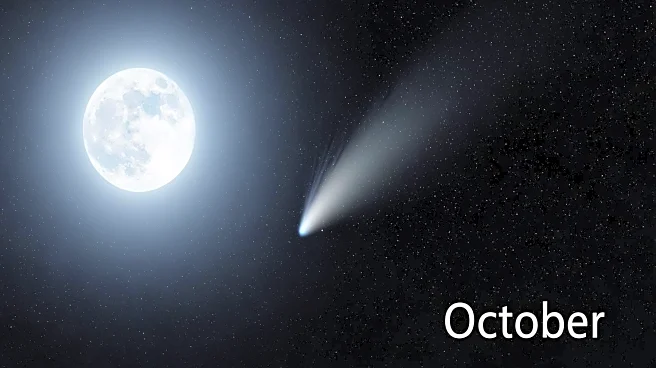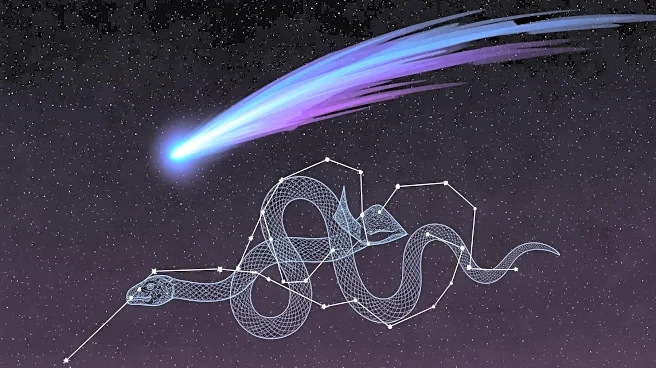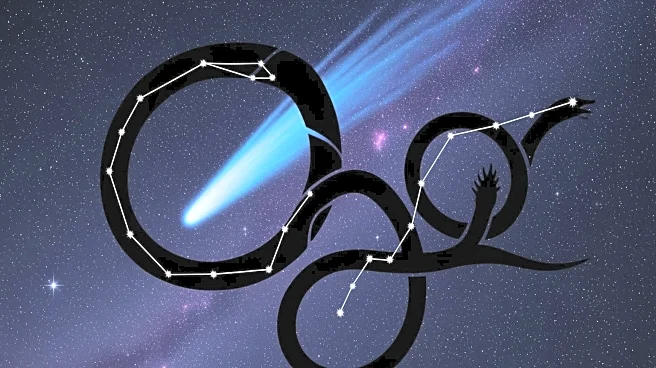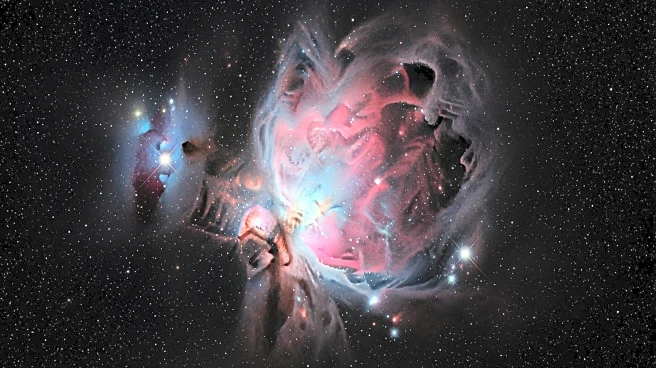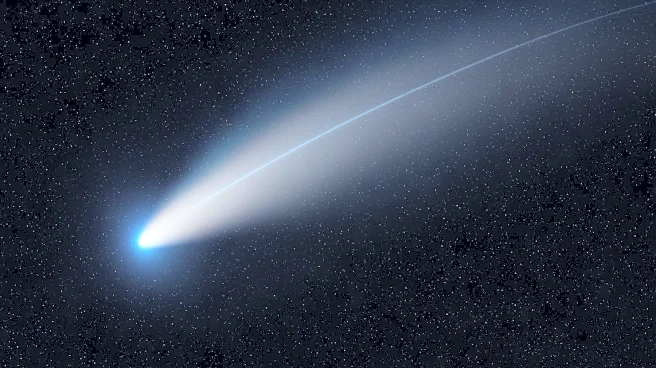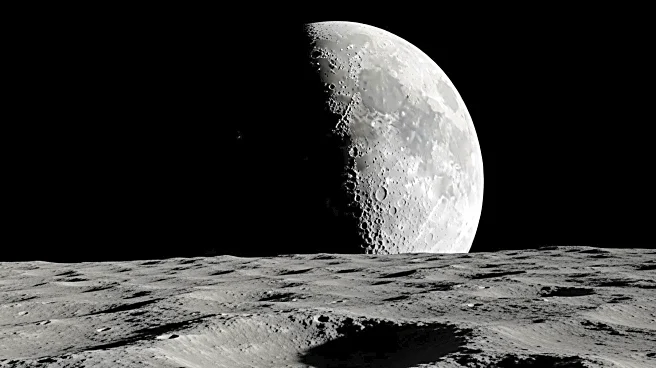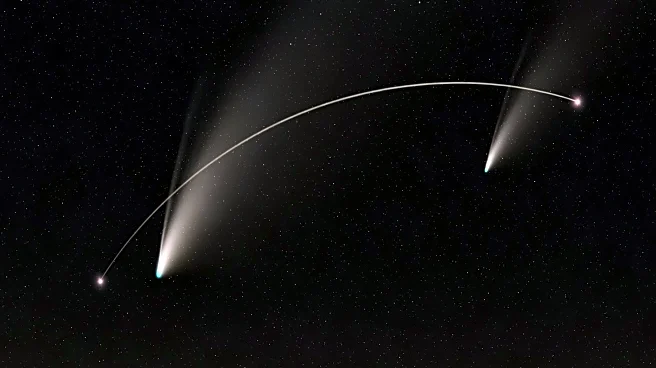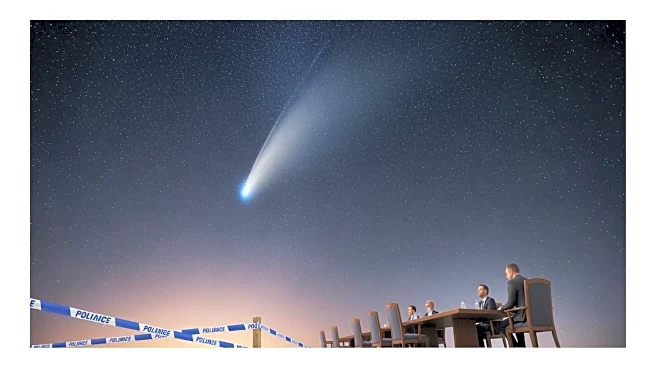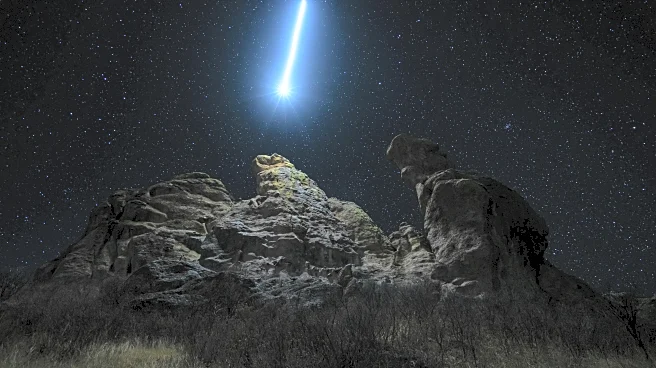What's Happening?
Astronomer Gianluca Masi of the Virtual Telescope Project captured a remarkable image of a glowing meteor trail appearing to wrap around the tail of Comet Lemmon on October 24. The image was taken using
an astrographic camera in Manciano, Italy, as Comet Lemmon approached the constellation Serpens Caput. The meteor's ionized gas trail created a visually stunning wave effect, seemingly intertwining with the comet's tail from Earth's perspective. Despite the appearance, the meteor's afterglow is an atmospheric effect, while Comet Lemmon is approximately 100 million kilometers away. Masi also released a timelapse of the event, showcasing the meteor's ion trail twisting around the comet as satellites left streaking trails through the image frames.
Why It's Important?
This astronomical event highlights the beauty and complexity of celestial phenomena, offering a unique perspective on the interaction between meteors and comets. The image serves as a reminder of the vast distances and intricate dynamics within our solar system. For astronomers and stargazers, such events provide valuable opportunities to study the behavior of comets and meteors, contributing to our understanding of their composition and movement. The visibility of Comet Lemmon, with a magnitude of +4.2, allows amateur astronomers to observe and appreciate these cosmic wonders, fostering public interest in astronomy and science.
What's Next?
Comet Lemmon is expected to continue its journey through the night sky, moving from the constellation Serpens Caput towards Ophiuchus, ahead of its close approach to the sun on November 8. This trajectory offers further opportunities for observation and study, particularly as the comet brightens. Astronomers and enthusiasts may continue to track its progress, using binoculars or telescopes to enhance their viewing experience. The event may also inspire additional research into the atmospheric effects of meteors and their interaction with other celestial bodies.
Beyond the Headlines
The phenomenon captured by Masi underscores the importance of perspective in astronomical observations. The apparent interaction between the meteor and comet tail is a 'perspective miracle,' illustrating how atmospheric effects can create illusions of proximity and interaction. This serves as a reminder of the complexities involved in interpreting astronomical data and the need for careful analysis to distinguish between actual physical interactions and visual effects.
